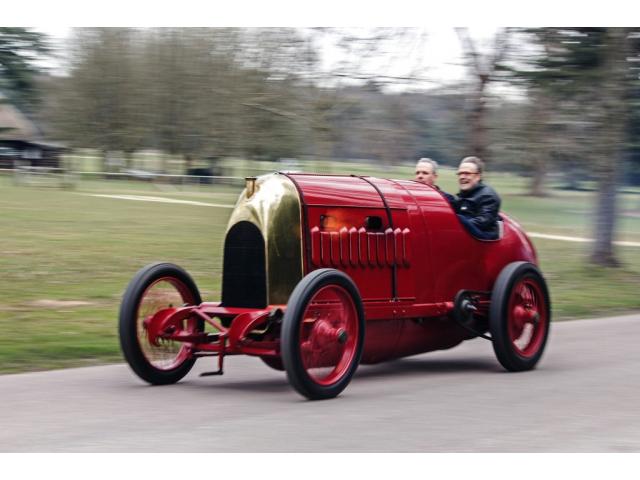1911 Fiat S76 Record
- Brand: Fiat
1911 Fiat S76 Record
The Fiat S76, later also known as Fiat 300 HP Record and nicknamed "The Beast of Turin", was a car built in 1910 by the Italian company Fiat specifically to beat the land speed record held in those years by the Blitzen Benz. Its 28,353 cc displacement engine delivered 290 hp. Only two examples were built.
The S76 had a 4-cylinder engine with a displacement of 28,353 cm3 (1,730.2 in3) (190 mm × 250 mm), providing 290 metric horsepower (210 kW) at 1900 rpm, compressed air starting with 3 spark plugs per cylinder, ignition with low voltage magnet, water cooling, transmission with chain, axle suspension rigid with front and rear leaf springs (rear longitudinal struts), 4-speed gearbox plus reverse gear.
The radiator design of this "prototype" for records was reused by FIAT for subsequent road models.
The S76 had a maximum speed of 132.27 mph (213 km/h).
The first S76 was constructed in 1910 and kept by Fiat. It was tested by Felice Nazzaro, who considered the 38 short cwt (1,700 kg) car ‘uncontrollable'. The second S76 was sold by Fiat to Russian Prince Boris Soukhanov, in 1911. Soukhanov originally hired Pietro Bordino to drive the car on the Brooklands motor racing circuit in Weybridge, Surrey, England. Bordino refused to drive the car faster than 90 mph. It was later driven at the Saltburn Sands beach near Redcar & Cleveland, England, where it reached speeds of 116 mph (187 km/h). Soukhanov then hired American driver Arthur Duray in a December 1913 land speed record attempt at Ostende, Belgium. Duray managed a one-way speed of 132.27 mph (213 km/h), but was unable to complete a return run within the hour allotted. The Beast of Turin was granted an unofficial title of world's fastest car due to this speed, but not made official due to being unable to complete the run within the time limit.
Following the First World War, the first S76 built was dismantled by Fiat at the end of 1919. Soukhanov's S76, missing its engine, ended up in Australia, where it was rebuilt and re-powered with a Stutz engine. The S76's career ended when it was crashed at Armadale in the early 1920s while practicing for a race to the coast. In the 1950s, it ended up in Stuart Middlehurst's, an early collector, hands. Middlehurst took the S76's Rudge wheels and hubs to restore one of his Hispano-Suizas. Middlehurst then gave the chassis to Neville Roberts. The chassis was later purchased by Brian Arundale in the 1980s, who identified it as the S76, but no major restoration work was made.
Descriptions & pictures by wikipedia & en.wheelsage & flickr & hemmings & other
| Specification | |
| Production Start | 1911 |
| Country of origin | Italy |





























